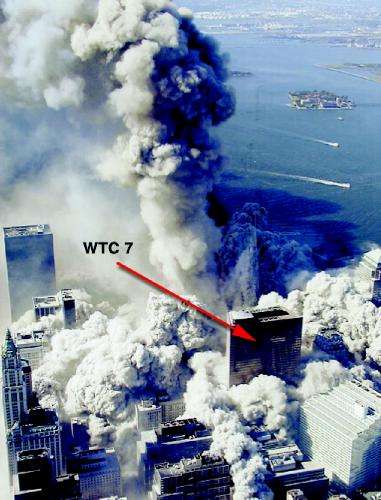The World Trade Center towers used neither a steel skeleton nor reinforced concrete. They were designed as square tubes made of heavy, hollow welded sections, braced against buckling by the building floors. Massive foundations descended to bedrock, since the towers had to be safe against winds and other lateral forces tending to overturn them. All this was taken into consideration in the design and construction, which seems to have been first-rate. An attempt to damage the buildings by a bomb at the base had negligible effect. The strong base and foundation would repel any such assault with ease, as it indeed did. The impact of aircraft on the upper stories had only a local effect, and did not impair the integrity of the buildings, which remained solid. The fires caused weakening of the steel, and some of the floors suddenly received a load for which they were not designed.
What happened next was unexpected and catastrophic. The slumped floors pushed the steel modules outwards, separating them from the floor beams. The next floor then collapsed on the one below, pushing out the steel walls, and this continued, in the same way that a house of cards collapses. The debris of concrete facing and steel modules fell in shower while the main structure collapsed at almost the same rate. In 15 seconds or so, 110 stories were reduced to a pile 9 stories high, mainly of steel wall modules and whatever was around them. The south tower collapsed 47 minutes after impact, the north tower 1 hour 44 minutes after impact. The elapsed times show that the impacts were not the proximate cause of collapse; the strong building easily withstood them. When even one corner of a floor was weakened and fell, the collapse would soon propagate around the circumference, and the building would be lost.
It is clear that buildings built in this manner have a catastrophic mode of failure ("house of cards") that should rule out their future construction. It is triggered when there is a partial collapse at any level that breaks the continuity of the tube, which then rolls up quickly, from top to bottom. The collapse has a means of propagation that soon involves the whole structure, bypassing its major strengths and impossible to interrupt. There is no need for an airliner; a simple explosion would do the job. There were central tubes in the towers, for elevators and services, but they appeared to play no substantial role in the collapse, and were not evident in the pictures or wreckage.



